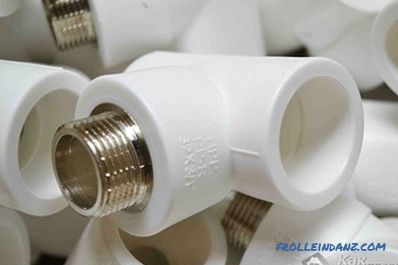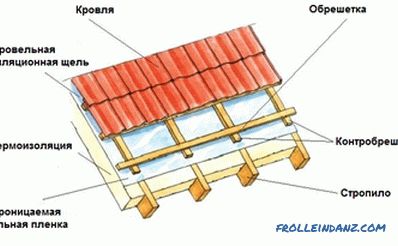When creating an autonomous sewage system for a private house, the important issue is the disposal of wastewater. For these purposes use various devices and designs, but the most widespread are cesspools. Such structures are simple to perform and do not require large financial expenditures. When creating such structures, it is necessary to comply with certain requirements and standards, otherwise you can harm the environment and incur complaints from regulatory authorities. It is about what there are sanitary standards, what other requirements need to be followed and will be discussed in this article.
Where to place the cesspool
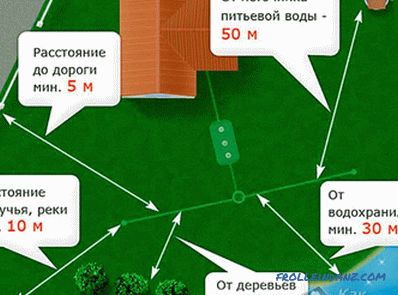 Find the most suitable place for the
Find the most suitable place for the
pit Before than to start arranging the cesspool on your site, it is worth knowing where it is better to place it. For this you should get acquainted with SanPiN 42-128-4690-88 and SNiP 30-02-97. These documents indicate the general requirements for the location of sewage treatment plants, septic tanks and other sewage systems and devices.
The first indicator is the distance of the sump from the house and other buildings. According to the provisions of SanPin, this figure should not be less than 20 meters. Such a requirement proceeds from the fact that unpleasant, and most importantly, harmful gases to human health emanate from impurities. The exception for the removal of summer kitchens and make-up time, in this case, the distance can be reduced. The place is chosen at the discretion of the homeowner in the range from 8 to 10 meters to the buildings. The documents indicate the maximum distance, it is 100 meters.
Also, building codes and sanitary regulations impose strict requirements on the location of drain holes from various sources of drinking water. So, if a well or spring is located nearby, then the distance to it should be at least 50 meters.
If the areas are small in size, it may be impossible to fulfill all the requirements. In this case, on the advice of specialists, it is better to resort to cooperation. For all neighbors living on the same line, a single well or artesian well is constructed. So you can avoid water pollution from cesspools of neighbors.
Neighbors are not forgotten in the documents. So, the distance from the edge of the drain hole and the adjacent area should be more than 1 meter. But, as a rule, this indicator needs to be done more in order not to quarrel with neighbors. According to the current SanPiN, if a controversial situation has arisen, then the location of the cesspool can be determined by the administrative commission of the local Council.
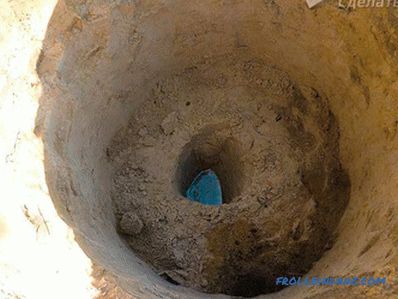 No further digging is possible due to groundwater
No further digging is possible due to groundwater
The cesspool and septic tank must be located above the groundwater . So you can avoid sewage in artesian wells and wells. The easiest case if the plot is flat. Under this option, there is no need to determine the direction of flow of groundwater. If the plot has a slope, then it is desirable to arrange the pit at its lowest point.
According to existing rules and regulations, the drain hole must be emptied at all times. These actions must be carried out twice a year, or more often. It is also necessary that the level of sewage does not reach a level above 35 cm from the upper edge of the pit.
According to SanPiN 42-128-4690-88 periodic disinfection should be carried out. It is performed using special chemicals. They should include:
- sodium hypochlorite - 3-5%;
- Creolin - 5%;
- Lysol - 5%;
- bleach - 10%;
- naphthalizol - 10%;
- sodium metasilicate -10%.
In this case, according to SanPiN, it is prohibited to use dry bleach.
Other requirements
 Pit without bottom
Pit without bottom
The issues of creating such structures in SNiP 2. 04. 02-84 and 2. 04. 03-85. Cesspools can be of two types:
- Pit without bottom.
- Sealed pit.
The first option is suitable for use in households without permanent residence. In this case, it should not fall into drains more than a day. Such constructions can be used in the suburban areas, where the owners are only on weekends and a small (up to three people) company.
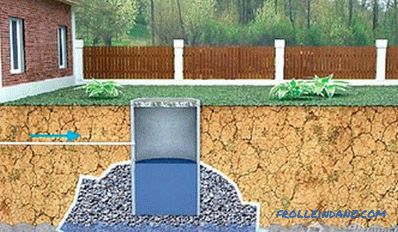 The device of a cesspit without a bottom natural filter. Therefore, there are strict rules governing the distance to the drain hole from a spring or well (or other open source of water). This indicator will depend on the quality of the soil. For example, it is for:
The device of a cesspit without a bottom natural filter. Therefore, there are strict rules governing the distance to the drain hole from a spring or well (or other open source of water). This indicator will depend on the quality of the soil. For example, it is for:
- sandstone and sandstone - at least 50 m.,
- loam - 30-35 m.
- clayey soils - 20 m .
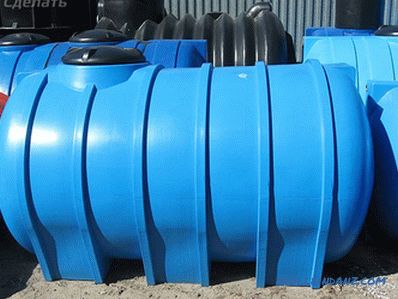 Sealed plastic cesspools
Sealed plastic cesspools
Sealed cesspools are more versatile. Such facilities can be located in any areas, with any number of people living.Sealed containers do not allow sewage to enter the environment, which means that they can be located close to residential buildings and a source of water. The main thing is that the smell does not interfere with comfortable living. To solve this problem, you can use biological products that contain colonies of bacteria. With their help sewage will be processed into safe sludge.
When creating hermetic structures, the main requirement is to ensure that the truck of the vacuum truck is accessible. Since the wastewater will not fall into the ground, the tank will quickly fill up. In this case, it is not allowed to overflow over the edges of the pit.
Federal Law
 Federal Law No. 52
Federal Law No. 52
Compliance with all the above standards and the rules are the responsibility of every homeowner. In Russia, the Federal Law №52 "On the sanitary and epidemiological welfare of the population." This legislation specifies all requirements for compliance with sanitary standards. And according to article 57 of this law, their non-observance entails administrative punishment and compensation for damage.
If there is a cesspool at the site, which by some parameter does not comply with the existing rules and regulations, then state authorities may require it to be eliminated. And if this causes damage to the surrounding nature or the property of the neighbors (for example, the groundwater or the site is polluted), then the damage will have to be repaired.
Video

